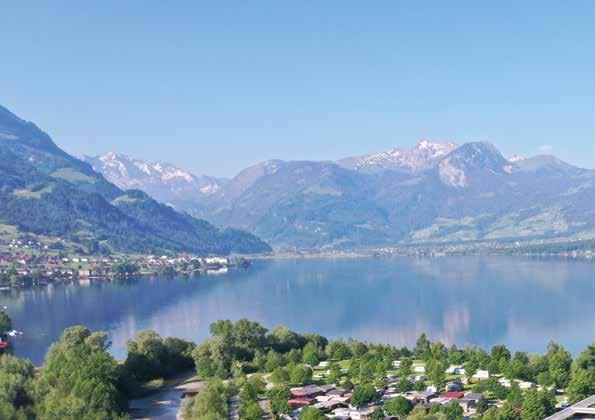


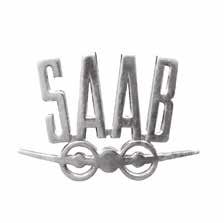


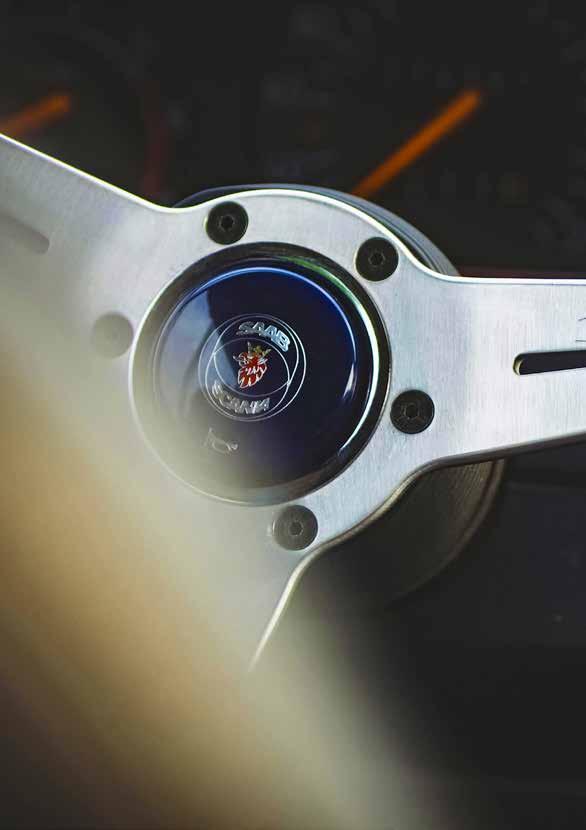
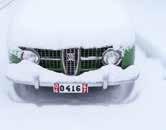
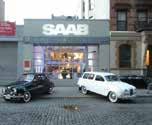
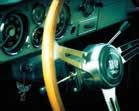
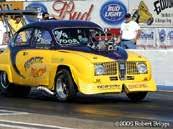

Please send in your Saab stories, tech articles, show reports, restorations, projects & barn finds.
Anything you think our members would like to read about.
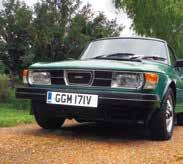
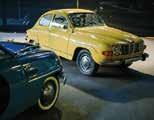
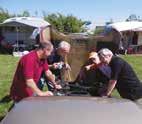

Please
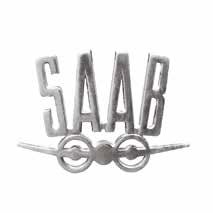
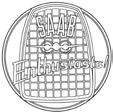














Please send in your Saab stories, tech articles, show reports, restorations, projects & barn finds.
Anything you think our members would like to read about.




Please



This club magazine marks the second edition since I was appointed Chairman, and what a whirlwind it has been. We’ve established an events team that meet regularly to manage the direction of the club and what events we organise and take part in. We are holding our first stand the Birmingham NEC Classic Car Show in November and have applied for a stand at the Classic Car and Restoration Show in March. We will be exhibiting alongside our friends at the SAAB Owners Club and UK SAABs. Our representation will be focussed on the SAAB 95 model in November which will provide an interesting contrast against the SAAB 900 T16 display by the SAAB Owners Club, I am personally looking forward to meeting everyone who visits and wants to find out more about our beloved SAAB cars. For anyone who wants to visit you will find a discount code inside this magazine.
The SAAB Enthusiast’s Club has a revamped website where people can subscribe to membership, streamlining the process of taking part in the club. We also have a section where members can advertise their cars for sale or advertise for items wanted. We’re happy to receive suggestions as to how we may be able to expand the website further.
In September, my local group Cambrian SAAB held a weekend gathering near Welshpool. On the Saturday I led a tour of Mid Wales with 12 cars that took us through some stunning scenery to the Welsh Coast and returning via Lake Vyrnwy, one of the Welsh man-made lakes that serves the community of Liverpool with their fresh water supply. Then on the Sunday, it was the Cambrian SAAB groups 3rd Anniversary
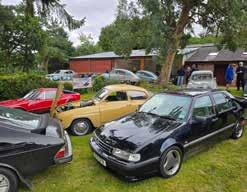

show, and 31 cars attended from the 92a (1949) through to an NG 95 (2012). This is proving to be a popular event with people attending from as far away as Plymouth, Fleet, London and Liverpool. We are hoping to grow this event next year, so get ready to put it in your diaries.
The club event’s team are going to be working hard to prepare some events for 2025 and will look to start publicising these in early 2025 so you can get them in your diaries. Looking forward to seeing you all soon, in person!
jon.bentley@saabenthusiasts.uk Jon Bentley
So much has happened since the last edition of the magazine! I’ve had very little time to work on the car or even put this issue together, so apologies for the delay.
First up was SaabFest in July. Thankfully, the drive there was uneventful. We set off early to arrive at a decent time. I set up my stall, sold a few T-shirts and had the chance to chat with several Saab friends. We left before it got too dark. I would have liked to stay for the hill climb, but the pickup isn’t exactly fast – despite the weight reduction!
Next, we were off to the International in Denmark. We decided to fly, as driving all the way there would have been quite an effort. We stayed in a self-catering apartment on the coast. As it turned out, the owners had not only driven a bullnose Saab from new but still owned it! Before our flight home, we drove 90 minutes to their house to check it out. The car was off the road due to engine failure, but the owner had bought a donor car and was waiting for his son to take over the project. Although the car was never going to be for sale, it was still thrilling to go to my first Saab barn find!
The next event on the calendar was the Cambrian meeting. I was unsure about going – five hours each way in the pickup wasn’t exactly appealing – but aside from a bit of knocking from the ball joints (which have since been replaced), she drove very well with no issues. It was a great show with a fantastic atmosphere, and I even got to meet Peter, the designer of the Enthusiasts logo!
Please contact us if you’d like your car or article featured





Hi there, I’m Brenna Bayfield, the proud owner of this 1974 95 V4; some of you may know me as the unfortunate daughter of Martin at JamSaab.
It could be argued that I exist because of Saabs - my Mum met my Dad when her classic 900 convertible needed a recommission. The rest, as they say, is history.
I am a second year light vehicle mechanic apprentice and live out in the sticks of rural Somerset. I work in a local garage, repairing and servicing customers’ vehicles, and I attend Taunton college for a week per month. I love my work, the cars, learning new things and helping customers.
I have always liked cars, classics and most importantly Saabs which I definitely have Dad to blame for. I have been dragged up around classics ever since I can remember. Many of my favourite memories

from childhood have involved classic cars, Saabs and the community around them. Those who have the misfortune to know Dad will confirm he’s always been a tight Yorkshireman, so naturally wanted to save on any childcare bills I may have cost him! My earliest memories of weekends and school holidays were not of a nursery or holiday club, but being with him at his workshop surrounded by intriguing machinery and various parts of Saabs. I was first hand witness to the dealings, challenges and happiness that restoring and maintaining Saabs bring to him. He was never afraid to let me ‘help’, teaching me how to safely use tools and guiding my exploration on how things worked. I would come home black with oil and full of ideas on taking things apart and putting things together again!
The Saab 95 V4 that I now own first
came into my life when I was 5 years old. It was 2008, during a rather long and boring day at the Bath and West showground. Dad spotted it for sale, got quite excited but (yep, tight Yorkshireman), decided it was more than he wanted to pay for it. The car failed to sell that day, but several years later Dad found the phone number of the owner saved on his 300 year old Nokia 3310 (more often off than on)... He got in touch and made a successful purchase for a now shocking £1200.
Since then it has been in the family and I have fallen in love with her over the years. I have such fond memories of the trips and laughs we have had in her. When I was 19 I took her on as my own and have been lucky enough to drive her regularly since. The first time I drove the V4 was exciting but also challenging - you are much more aware of the road and driving conditions than in a modern car where you’re more insulated from them. The lack of power steering means that slow speed manoeuvres such as parking are hard work! At higher speed, however, you don’t notice as much

difference when compared to a modern car with power steering.
The column gear shift takes some getting used to, I find I have to be much more in tune with the car and engine speed, and all gears can sometimes take a little feeling and patience to get into. I am aware of my slower braking speed when driving her, the brakes are heavier to operate and less rapidly responsive than modern cars. I keep my distance and usually favour dry days to take her out for a trip: it’s not much fun to take her out in the rain. Generally, she keeps up well with traffic, I never feel that I’m lagging behind, and occasionally like to think I can ‘race’ getting off the lights, as she is a torquey little thing.
The car (as far as I know) is completely original and pretty solid. When new, she was red, now she’s 50 shades of pink - with every panel being a different sun-bleached shade, the roof having no more paint to polish. There’s no evidence of any previous big repairs or replacement body work other than the o/s/f wing. It's a patinaed look, but I love it. I often get asked if I will paint it or

replace the interior, and I reply ‘Why would I?’ She shows her age, and must have a few stories to tell!
We plan to weld a few small patches to repair the windscreen surround over this coming winter. Apart from that I don’t intend to do much major work on her.
My 21st birthday present was a NOS clutch for the car, which I also had to fit. This proved another special memory, compared to the cars I work on for my job, maintaining the 95 is a completely different experience. It is more straight forward to work on and ‘back to basics’ which I really enjoy, especially when I'm learning from the ‘guru’.
The only modifications that have been done are the ‘Tommy two button’ radio (because I was sick of dad being a backseat driver) and a 12 volt cigarette lighter, I have also recently acquired an original Saab roof rack from a good friend which just tops the car off... Thank you, John.
Like all Saabs, the seats are super comfy, if a little ‘worn’(!) and the heating extraordinarily good. We’ve had some amazing drives in her, one of my favourites being a trip to the South Coast for a day and another to the Quantocks for a picnic in the woods. It is such fun driving a car with a big personality and lovely to meet interested folks who stop to chat.
I think the worst trip we’ve had is getting lost on the way to a steam fair and having to off-road, down to dad’s awful map skills. We eventually found our way back to civilisation after driving through what I now recognise to be a footpath and into a farmer’s field... The calves were rather curious.
To finish: very grateful thank you’s to my bezzie mate - Dad, to all the Saab community far and wide, and most importantly to the V4, who surprises me every single day. It is a true pleasure and honour to have such a reliable, beautiful and characterful car.








By Tony Naylor
I joined the Saab Learning Centre in 1986 as a Technical Trainer and started working on the Apprentice Programme almost immediately. In those days Saab saw BMW as a main competitor and since they were working on an Apprentice Programme it made sense for Saab too.
So in 1988, The Saab Apprentice Programme was born. It was decided to make it a four-year programme and because we didn’t have the manpower to cover all aspects of the programme we involved the MAA in England, the AMVTA in Scotland and the RTITB in Northern Ireland to act as managing agents on a day-to-day basis.
The entry qualifications for the programme in England, Wales and Northern Ireland were a minimum of three GCSEs at grade C or above in English, Mathematics and a Science. In Scotland, the requirements were a standard grade 4 in the same subjects. We adopted B.Tech for the theoretical qualification and YTS for the practical qualification, later to become NVQs. This, along with at least one Saab
service training course at the Saab Learning Centre in Northampton.
The entry qualifications were rather high for Motor Vehicle apprentices but it was intended that apprentices who graduated after four years would move on to the Saab Master Technician programme.
When we had to convert to NVQs as a means of practical testing, it meant the training manager and I had to qualify as NVQ assessors and verifiers and then travel to every dealer with an apprentice to first assess the apprentice and then verify the assessment. This involved dividing the UK between the two of us, I had an area including Scotland, Wales, Ireland and the UK except for London and the South East. To be fair most of the apprentices were located in the southeast quadrant.
Once a year, for a month, we travelled around the dealers assessing the apprentices. The verifications were carried out back at Northampton. We did this on top of our normal technical training commitment and our training in Sweden.




This is the first Apprentice Programme Brochure when Allan J Smith was MD of Saab Great Britain Limited. There were 3 other versions of the pamphlet over the years, each brought about by either a change in MD or the programme.
As an aside, I remember going to France to test drive the Saab Viggen on a track set up as a normal road system. This was just north of Paris. Walking through the pit area I came across an unknown vehicle having its brakes serviced. It turned out to be a prototype Audi TT. Compared to the Saab it looked very lightweight. That night a few of us went out looking for food and being France we found an auberge which was just about to close, due to a lack of customers we supposed. An elderly couple were running it and 20 of us turned up on the doorstep. They didn’t flinch, apologised in French that it may take some time and gave us wine to ease our pain. I don’t know how they did it, but in 30 minutes we had a 3-course meal with wine, absolutely fantastic. They received a generous tip that night, so what they thought was a wasted evening turned out to be very lucrative indeed. There must be a lesson for us all in there somewhere.
Anyway back to the subject of apprentices, when the apprentices came to Northampton for the first time they were just out of school and quite immature. We put them up in a local hotel, all the expenses paid including a drink, although they shouldn’t have alcohol if under 18. We rarely had a problem with them although a Saab security
guy was usually sitting in the bar incognito. Until one particular group and one particular individual spoiled it. He was trying to order champagne with dinner, presumably showing off. The hotel staff didn’t know what to do, so asked the undercover security man. The hotel was told under no circumstances and the individual left the next day, a career ended. He’s probably in government now. Once the apprentices reached the 2nd, 3rd and 4th years we didn’t have to worry about behaviour in the hotels any more, they were far too busy.
In their second year, we sent them away for a week on an Outward Bound type course. The first time we did this was to Aberdovey in Wales, in fact to Outward Bound itself. I attended and found religion being talked about and prayers being said. Now, I class myself as a Christian but I objected and we never used Outward Bound again. Instead, I found a nice little place in Derbyshire called Lindley doing something similar, but we had a great week, and the group got on well. I remember at the end of the week just before leaving we had a debrief and one apprentice stood up and said “You’ve changed my life”. I won’t mention his name, because most of you know him.

I started my apprenticeship sometime in June 1988 at Bell and Colville in the SAAB workshop. Shortly afterwards I was informed, I’d been put on the Saab apprenticeship scheme. This meant not only would I have one day a week at college, I would have week blocks at the Saab training center at Round Spinney on the outskirts of Northampton.
The first week of training came and as I was only 16 years old, I made my way from south London to the SAAB training center by public transport. On arrival we were met by an always smiling Tony Naylor, the most amazing mentor a group of 16 year old lads, who were only just learning about themselves, could possibly have.
Tony taught us the history of Saab, basic servicing, engine rebuilding and how to communicate properly.
The saab apprenticeship programme was Tony’s baby and he made it the best it could possibly be.
Working as a team was a big thing, so one week of the programme was an outwood bounds course in the Peak District, this involved rock climbing, abseiling, 10 mile hikes and much, much more.
As a group of 17 year old lads, some of which hadn’t been away from home without
their parents, we all did out best. The thing that really inspired us was a forty something Tony Naylor, not only doing all the activities, but doing them better than us.
We all passed the apprenticeship programme, I remember my dad being very proud at the ceremony.
I look back at these times now, as some of the best things that have happened to me.
Tony Naylor is one person who has had a massive influence on my life, not just the SAAB thing but his push and hunger for life, his amazing warmth and his happiness and smile. Tony is a true hero and Friend.
This is my story, think how many other peoples stories he has inspired!
Joe Pugh


7-9 June at Trollhättan, Sweden





So it was that time again, once every two years we travel to our beloved Sweden, the land of Saabs, mainly, but oh so much more.
This year we flew and landed at Gothenburg to start our lovely journey though the forests and around the lakes heading to Trollhättan on the scenic route.
This journey would take us past a fantastic olden style café called Brobacka Kaffestuga, just along route 190. The café has been around since 1954 and is now owned by Susanne and serves the most delicious waffles using the same recipe that started 60 years ago.
After filling our bellies we travel
onwards and stop at a beautiful, well preserved Shell garage at Erska. All dressed up to represent a more relaxed time of driving, where they probably filled your car with fuel for you. You must get a photo here, its timeless.
The journey continues and you cant help but notice the beautiful scenery, the giant rocks sticking out of the land, the many trees, the numerous lakes and the very pretty houses, mostly yellow, that spread out along the chosen roadway. The signs for Mooses are everywhere but I’m still to see one in the wild. Hares, deer and even wild boar but no moose. One day.
When we get to our hotel we are all










welcomed by the very happy smiley Victoria who makes us all feel like family and gets us settled for our stay. Nothing is too much, they are all genuinely happy to see us, and Martin, our barman soon has a tasty local Swedish pint on the bar.
In the evening we wonder down to the Trollhättan Locks where the locals put on a small classic car show for all. They are so happy to chat about their pride and joys and we stay chatting until late, but not dark, it never really gets dark and you have to keep and eye on your watch to know its time to go back to the hotel for another Swedish pint.
We had planned our stay to be a relaxing one and although we have come for the Saabs, we enjoy the local culture as well. So many Swedes stop to chat about their days in the factory when Trollhättan buzzed with Saabs in every street. One nice lady stopped her daily cycle ride when she heard our British voices and
wanted to chat about a bright orange 96 we had parked next to and told us that she had probably put some trim into it as she remembered them fondly. It made us smile with the pride that beamed out while she chatted in her broken English.
This experience happened every day and its one of the great things you will notice during your visit.
If you have never been to Trollhättan, or indeed Sweden, you must. Not just for the cars but for the people, the scenery, the whole package. You will not be disappointed. Even in the cities you will be happy with the welcome you get.
And although the next festival is still three years away, I know I will be back, fly in, stay a while then go home with smiles. 2027 will be Saabs 80th birthday and in that year I plan to bring my beloved Saab, Svea, back to where she was born. A journey worth taking.
Robin






by Steve Trigg
I was sitting in my conservatory, watching the sun go down. Outside on the drive sat my 1971 Saab 96 V4, which I bought for £100 back in 1984. It’s been forty years since I got my first Saab, so I started reflecting on all the Saabs that have come and gone over the years—and some that have stayed.
“Saabastian,” my 1971 V4, was my first Saab and my daily driver for many years. In 1988, I added a red Saab 95, followed in 1992 by a 1977 Souvenir, number 147 of the last V4s to enter the country. That Souvenir was restored after being pulled from a garage that had been damaged in a fire. Unfortunately, a downturn in 1994 led to both the 95 and the

Souvenir being sold.
In 1997, I bought a white 1983 99 GL from Bill and Anne Chesterton. I fitted it with an Airflow body kit and a pair of Marchal spotlights, giving it a sportier look. I kept it until one day, while waiting to turn right, a lorry rear-ended it, ending its time with me. After that, I upgraded to my first 9000, a 1988 model that had previously been owned by Mike Philpott and Mike Thompson. At the time, it felt like my dream car. Eventually, I replaced it with my second 9000, a 1994 Aero, in 2001.
Around this time, my wife Frances decided that if she was going to be
surrounded by Saabs, she might as well have one of her own. She bought a 900 Saloon, which she later upgraded to a 9-3 convertible in 2005. After she passed away in 2014, I kept the car.
In 2006, a once-in-a-lifetime opportunity came my way. Wally Glander told me he was selling his 1963 Saab 96, and “Thomas the Two-Stroke” became mine. After restoring it, it won “Car of the Show” at the East Midlands Saabs 25th Anniversary weekend, and it’s still with me today.
In 2009, I traded in the 9000 and moved to a more modern Saab, a 2001 9-5 Saloon. In 2013, I replaced that with a 2001 9-5 Wagon. For a few years after that, things were relatively calm, with four Saabs in the fleet: a 1963 96, a 1971 96, a 1997 9-3, and the 2001 9-5 Wagon.

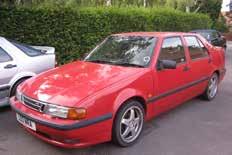

I had always admired Andy Boorman’s early 99 and had told him many times that if he ever wanted to sell it, he should let me know. Then, at an event in 2016, he mentioned he was thinking of buying a Sonett V4 but was short of cash. I said, “You could always sell me the 99,” and two months later, it was mine.
There seems to be a pattern here because at Prescott in 2018, Andy mentioned he was downsizing his fleet again and had a 1995 9000 for sale. A month later, 9000 number three was mine.
The 9-3 convertible went in 2022, so currently, I have a 1963 96, a 1970 99, a 1971 96, a 1995 9000, and a 2001 9-5 Wagon. It’s a small collection compared to some I’ve known, but it’s enough for me.
Go Swift, Go Safe, Go SAAB!

Steve





The first time I saw a Saab 900 up close was in 2017, at the first SAAB Owners Club of Japan (SOCJ) meeting I attended after purchasing a Saab 9-3.
I attended with the 2001 Saab 9-3 that I had purchased cheaply a few months earlier, but it was a black 1990 SAAB 900 turbo that instantly stole my heart at that event.
Several months later, I enlisted the help of the owner and a SAAB specialist to help me find an owner who was interested in selling the 900 turbo.

Then, I was introduced a white 1993 Saab 900 turbo S owned by the president of a company in Osaka. This is the car I own now.
What came earlier than the car was delivered to me was the Nardi wood steering wheel. Of course, it has the “SAAB Scania” emblem in the middle. This was the first modification I did. This is a story in April 2018. Since then,
I have modified the car as I like, installing Hella fog lights and driving lights, and putting fabric from IKEA on the door cards.


The latest modification is the body decal. I applied these decals because I wanted to give the car a more 80’s look.
Since SAABs are rarely seen in Japan anymore, I get a lot of attention from people when I drive my SAAB 900. It is not rare to be approached by people waiting at traffic lights or in convenience store parking lots. And now that I have this decal, it stands out even more, and many people are interested in it when I display it at car events.
There are many reasons why I bought a Saab, an endangered species in Japan, but one of the main reasons is that I studied in Sweden for a year when I was a university student. I had a strong emotional attachment to Sweden.
The reason why I drive a Saab 900 is not only for style. The Saab 900 is like a time machine, and when I drive it with 80’s music playing in the background, I feel as if all the space around me has changed. I was born in 1991, so I don’t know about this world, though.
I love living with this Saab, and I also stream it on Instagram and YouTube. The former is on my account tomsaab93, and the latter is on my channel called SAAB 900 Japan or Tom’s Car Story.
I would like to meet Saab owners in the UK someday and talk with them about various things. Until then, let’s do our best to maintain our beloved cars.
Tom K
In 2003, my son Fredrik began contemplating getting a car to restore. As a Saab enthusiast with a history of owning a 1964 Saab 96, it seemed natural to consider a Saab. The idea of a Saab Sonett intrigued us, especially since Fredrik preferred sports cars over regular models.
We browsed eBay and sought advice from Mats Jonsson, an experienced car importer. After losing a late-night bid on a Sonett III, we realized that inspecting the car in person might be crucial due to potential rust issues.
In October 2003, we discovered a 1968 Saab Sonett V4 in a barn near Hallstavik, imported from California. Despite its poor condition – sun-bleached paint, disassembled engine, and surface rust – we saw potential. Fredrik decided it could be a good project, and after some negotiation, we bought the car.


With no prior experience in car restoration, we relied heavily on the Saab Club forum for guidance. By December, our garage was ready, and we began disassembling the Sonett. Fortunately, most bolts were rust-free, and we removed significant desert sand and debris. We sandblasted the chassis, revealing hidden rusted areas that required new rocker panels, which we fabricated affordably.
In summer 2004, I decided to purchase my own Sonett, opting for a Sonett V4. I found one with partial restoration in Småland, chassis number 550, just 400 numbers before Fredrik’s. We made the purchase, loaded it onto a trailer, and returned home smoothly.
Now with two cars in similar stages, we documented our progress online, connecting with others for support.
We painted the chassis with RAL 7016, working inside a makeshift tent. Undercoating was chosen for better protection and soundproofing, resulting in a visually appealing finish.
We learned to manage parts and track our inventory diligently. Over 100 parts underwent sandblasting and powder coating, enhancing our restoration efforts.

The exciting phase of assembly began, and we installed new components like bearings and joints. We even built a sandblasting cabinet for efficiency.
I felt confident tackling the electrical system, replacing wires and installing new harnesses. We faced challenges with fitting the spare tire due to the battery’s location.
Debating whether to keep the original engine, we decided to build a 1700cc engine instead. We sourced parts, including a rebuilt 1815cc V4 engine that became a great find. Fredrik’s engine required more extensive work, so we obtained a V4 engine and reassembled it with new components.









Renovating the doors was challenging due to the numerous components involved, including seals, locks, window mechanisms, and alignment. After disassembling the doors from both cars, we returned to Blästrix for blasting and priming. The #950 doors were rust-free, while #550 required some welding for small holes. We added profile iron for improved side impact protection. The window mechanism on #950 was worn out, prompting Fredrik to modify one from a Sonett III.
We chose to paint the cars with the body mounted, as the body flexes during assembly. Sealing the rear wheel arches was crucial, requiring multiple tubes of sealant. We checked for leaks using a strong lamp. Before prepping for paint, we consulted the painter, who advised us on necessary preparations. The body of #550 was in decent shape with minor cracks, which I reinforced with polyester resin. Removing the underbody coating from the hood was labor-intensive but necessary for aesthetics.
#950 needed extensive work, including repairing cracks and significant sanding to achieve a smooth finish.


#550 was repainted from “Chamonix White” to “Midnight Blue,” while #950 retained its original “Blue Metallic.” I opted for “Talladega Red” for my car after the painter couldn’t match my first choice. The difference between the colors was minimal, making it easy for touch-ups. The results from the paint shop were stunning, although I lost my digital camera, so I only captured the moment with my phone.
Fredrik chose “Sonett blue,” and we were pleased with the outcome.
All lights for #550 were new, making installation enjoyable. Fredrik restored lights for #950 using new lenses and the best existing parts. I had to source missing bumpers for my car and met a seller at a Saab event. The trim for my hood was available, but Fredrik’s was damaged, so we found an alternative that worked.
To fit the battery box, we sourced a smaller spare tire. An oil cooler was installed in front of the radiator, using chromed copper pipes for a clean look. We also fabricated a new expansion tank for #950.

We installed the V4 engine with the gearbox attached, which went smoothly. We sourced hoses from a local wholesaler and adapted a suitable water pump hose.
#550 came with a pre-cut but unfinished interior, while #950’s was beyond repair. We used my car’s original interior in Fredrik’s. A local workshop edged the new and old interiors, while we found suitable carpets.
#550 started without issues, aside from a carburetor alignment problem. The first test drive was exciting, and everything worked well. #950’s startup also went smoothly, but later we discovered a bent pushrod caused by excess gasket material. After addressing that, we faced further fuel-related issues.
Mounting the doors proved time-consuming, requiring precise adjustments for function and aesthetics. My car had a mix of original and new glass, but Fredrik’s was missing

seals. I attempted to install the windshield myself but cracked it, leading to professional installation. We fabricated seals for #950’s windows, which turned out well.
#550 passed inspection without issues, receiving praise for the restoration. Fredrik faced delays and had fuel problems, which postponed his inspection until spring.
I drove #550 on several trips, noting minor adjustments needed. The car performed well, and I received positive feedback at the Saab Festival. After a quiet winter, we discovered a Sonett II for restoration, reigniting our enthusiasm (See previous issue).
We prepared for #950’s inspection, addressing fuel issues along the way. Fredrik’s car stalled en route, necessitating a tow to the inspection station, but it passed with praise. Subsequent adjustments resolved the fuel problems.
Tomas Rosendahl






by Tero Kellosalo

I’m 47 and live in a small town called Toholampi in the heart of Finland. Saabs have been part of my life since I was about 7 years old, when my father started driving a Saab 96 in the cheap rallycross class back in 1984. Since then, there have always been 96s in our family. I began driving in that same rallycross class, known as Folkrace in Sweden and Jokkis here in Finland, when I was 16.
At 18, my friend had a street drag racing Ford Escort MK1 with a 2.0L OHC engine that produced around 500 horsepower. One day, I asked him if I could take a ride in that car, and that experience ignited my desire for something similar. Although I had no

idea how turbocharging worked, I went to the local library and found a book that explained it. At that time, my father, who has since retired, owned a car repair shop and had a lot of machines at his disposal. So, in 1996, I built the first version of my Turbo 96. It featured a 1500cc engine, a single 48 Dellorto DHLA carburetor, twin exhaust port heads (which I fabricated), the original gearbox with longer first and second gears, and an MSD AL6 ignition system with a two-step module. It was street-legal, and I competed in local drag racing events for three years, achieving a best time of 13.2 seconds at 172 km/h in the quarter mile—a very respectable time at the

time. I machined most of the components myself, thanks to the excellent education and guidance from my father, who truly can do it all.
After that, life got busy with education, military service, and starting a family, and I didn’t have a drag racing car for 20 years. However, I continued to race in rallycross and with a Locost car that I built. Eventually, I sold that first turbo car piece by piece.
In 2017, I began building the car I currently have. I wanted to recreate the car I had in the late 90s, incorporating everything I had learned over the years as a mechanic, both from my own racing experiences and from working on other cars.
My current car is a 1977 model built in Uusikaupunki, Finland. It has 302 hp, 380 Nm of torque, runs at 1.5 bar, and uses E85 fuel with a fully programmable engine management system. Originally a rally car in the 90s, I had to rebuild it from the

ground up, including changing the roll cage and addressing some minor rust repairs. The biggest modifications were made to the engine bay, where I removed half of the inner mudguards and replaced them with a tube chassis to increase the car’s rigidity. All front suspension components have been reinforced, and I’ve installed poly bushings at every joint, along with two-way adjustable Avo shocks.
The car is equipped with an Audi 016 gearbox from an Audi 100 (1985). I replaced the original gearbox because I broke it in the 90s and was concerned it wouldn’t handle the horsepower I was aiming for.
The Audi gearbox is mounted to the Saab engine block via a plate, and it uses Audi TT Quattro front left driveshafts on both sides. VW Passat wheel bearings and hubs were also used, which turned out to be the perfect lengths, allowing me to retain the original Saab suspension arms. Some lathe work was required, and I had to make a






minor bump in the firewall. Initially, I had a steering column-mounted gearstick, but it was cumbersome and placed the gears in awkward positions—first gear was up and back, and second was up and forward. It was very confusing, so I switched to a floor-mounted gearstick this summer, which works excellently. The clutch is from an old VW Beetle, a 200mm Kennedy Stage 3 with a copper disc.
As for the engine, it’s actually the same block I used in the 90s, along with the same camshaft and oil pan. It has a displacement of 1756cc, with 90.5mm pistons and Subaru H-beam conrods. I opted for Subaru conrods to ensure I had racing bearings, as there were none available for the original conrods, and I believed the originals would be too weak. The crankshaft is the original 17M but slightly stroked to achieve a suitable compression ratio with Saab 9000 pistons, resulting in a ratio of 9.3:1. The crankshaft has been polished and precisely balanced, and I have had zero bearing


issues. The water jacket is filled with block cement up to an inch below the block surface, and there is a girdle plate to support the main caps. Currently, I’m using copper rings and original head gaskets, but I’ve had some problems with those. My plan is to machine steel O-rings for the cylinder heads to better support the copper rings.
The cylinder heads feature twin exhaust ports that I designed. They have 42mm intake and 37mm exhaust valves. These heads have garnered a lot of interest because they were created by removing all the original material and replacing it with tubes and a flange. The tubes are welded to the heads using a MIG welder; I first heat the cylinder head, then weld it. Afterward, I hammer the weld seams and allow the assembly to cool slowly in glass wool. I’ve never encountered any issues with the welding, as the iron in the cylinder heads is good to work with when you know what you’re doing. The tube exhaust manifolds lead to a Mitsubishi TD04HL-



20T turbocharger, which uses the exhaust housing from a Saab 9-3 V6.
The intake manifold is also custommade and features an integrated airto-water intercooler. This setup is advantageous for aerodynamics in drag racing, as you can almost completely close the front grille when there is no large airto-air intercooler. It also allows for very short tubing from the turbo to the intake manifold. The intake manifold has a crossflow design, with injectors located on the opposite side of each cylinder for direct injection into the airflow. It was crafted from the original manifold by removing material, followed by welding tubes, sheet aluminum, and the intercooler. It has a single 60mm throttle body.
My best quarter-mile time is currently 12.6 seconds at 180 km/h, with a 0-100 km/h time of 4.98 seconds. I have plans to further improve performance next year, as I aim to participate in the Finnish Drag Racing Championship series. If all goes



according to plan, I will have a new engine. There won’t be any major changes, but I want a more reliable setup and a spare engine as well.
Currently, you can follow my journey on Facebook and Instagram, and there may also be some content on YouTube regarding the new engine, so stay tuned!
facebook.com/mudwedge instagram.com/saab96turbo


























If you know of activities which you think may be of interest to fellow Saab Enthusiasts please drop us a line/e-mail/ phone (contact details are as given on the committee pages) and we will include them in the magazine and on our website.

Fri 25 - Sun 27 October
SEC Autumn Break
Cheltenham, Gloucestershire.
This event is a return to SAAB Enthusiasts Club events where we can meet and spend a weekend away together and have some fun and lots of SAAB’s. As we’re not able to block book accommodation, we’ve selected some suitable alternatives. Please book early as these venues are extremely popular even in off season.
If you are planning to attend, please email jon.bentley@saabenthusiasts.uk

8-10th November
Classic Motor Show
NEC, Birmingham.
We have some great news for members, the club has a stand at the Lancaster Insurance Classic Motor Show at the Birmingham NEC. This year we have decided to make a display of SAAB 95 models, let’s face it “everyone loves a wagon”.
We certainly would love to see you at the event. This is a significant event in the clubs history as it’s out first display at this show.


8th to 10th August IntSAAB 2025 Melchtal, Switzerland https://intsaab2025.com
This special feature is intended as a service to both members and to the motor trade, providing contact information and publicity for specialist garage services and spares. Entries are accepted without endorsement at the discretion of the Editor and may be withdrawn without notice.
Key: Service provided: A. Sales, B. Parts, C. Servicing, D. Repairs, E. MOT's, F. Restorations, G. Books/Manuals/Memorabilia SAAB Models: 1. 2- stroke (*inc Sonett), 2. V4 (*inc Sonett), 3. 90 and 99, 4. 900 classic 5. 900 from 1990, 6. 9000, 7. 9-3 and 9-5










Chairman Jon Bentley
07738 438223 jon.bentley@saabenthusiasts.uk
Secretary Trudi Hodges
The Committee continued
01202 748128 trudi.hodges@saabenthusiasts.uk
Committee Post Name Contact Address
Membership Steve Trigg
Treasurer 01332 872302
V4
Trade Directory steve.trigg@saabenthusiasts.uk
Mark Dodsworth The Olde Cottage, Gronwen, Morda, Nr Oswestry, Salop SY10 9AR 01691 658398
Art Editor
99/90
Liaison
Simon Coleman 07736 812608
simon.coleman@saabenthusiasts.uk
Alan Courtenay 6 Wadley Road, Leytonstone, London E11 1JF 020 8556 6922
Iain Hodcroft
Post 99 models Glen Ellis 102 Nicker Hill, Keyworth, Notts NG12 5PD 0115 937 4665
07976 314012
iain.hodcroft@saabenthusiasts.uk




V4
Chris Calvert
chris.calvert@saabenthusiasts.uk




99/90
Alan Courteney 020 8556 6922
Mark Dodsworth The Olde Cottage, Gronwen, Morda, Nr Oswestry, Salop SY10 9AR 01691 658398
alan.courteney@saabenthusiasts.uk
900 Glen Ellis 0115 937 4665 glen.ellis@saabenthusiasts.uk
9000 Harvey Williams 07914 788741
harvey.williams@saabenthusiasts.uk
9-3 and 9-5
Paul Dulson 07742 700211
paul.dulson@saabenthusiasts.uk
F ind us on Face boo k ht t p: //ww w.f ace
T he Sa ab Enthusiasts Club exists for all who are i nterested i n SA A B cars, especially i n the older models Ow nership of a SA A B is not a prerequisite of membership but a deg ree of enthusiasm for the marque would be expected.

a quar terly magazi ne which encou rages cont r ibutions f rom all members i n the for m of ar ticles or photog raphs which may then be published on this website. Both the magazi ne and website car r y notices of Sa ab related goods for sale or wanted
T he Club also organ ises gather i ngs where members either camp or at tend as d ay visitors and aut u m n hotel weekends. It also offers tech n ical advice on older models and promotes events by li ke -m i nded organ isations

The views expressed in this magazine are not necessarily those of the Saab Enthusiasts Club or its committee members. The Saab Enthusiasts Club accepts no responsibility for any advice published in the magazine and advice or services provided or obtained from persons or businesses advertising in this magazine.








